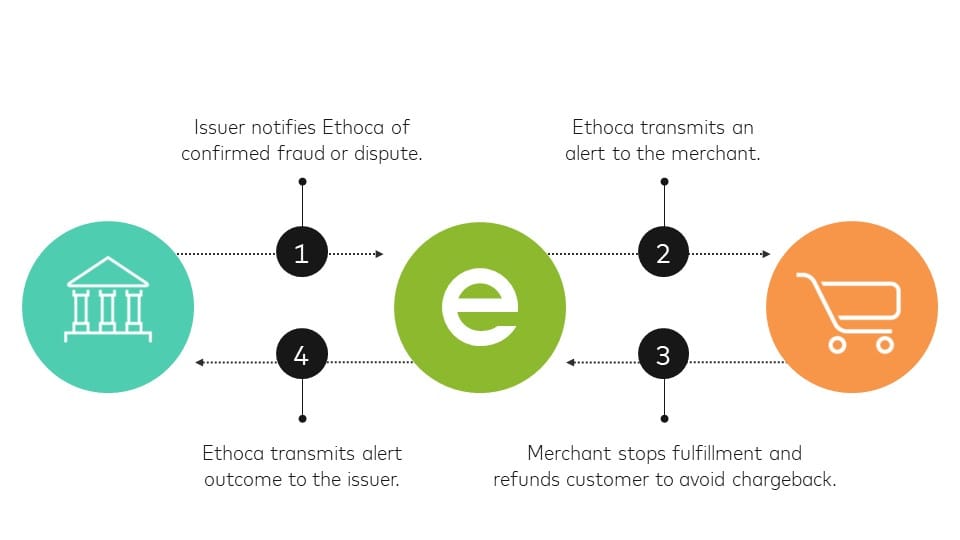
Welcome to our blog post on understanding recurring payments on Square. In today's increasingly digital world, businesses are constantly exploring new ways to streamline their payment processes and provide convenience to their customers. Recurring payments offer a solution that benefits both businesses and their customers, allowing for automatic and hassle-free transactions.
In this blog post, we will delve into the world of recurring payments on Square and explore how this feature can be utilized to enhance your business operations. Whether you are a small business owner, a freelancer, or an entrepreneur, understanding the ins and outs of recurring payments can help you save time, improve cash flow, and provide a seamless payment experience for your customers.
Throughout this blog post, we will cover various topics related to recurring payments on Square. We will start by explaining the importance of recurring payments and how they can benefit your business. We will then guide you through the process of setting up recurring payments on Square step by step, ensuring that you have a clear understanding of the necessary actions to take.
Managing recurring payments is also a crucial aspect of utilizing this feature effectively. We will provide you with insights on how to edit, pause, or cancel recurring payments, as well as troubleshoot common issues that may arise.
Security is of utmost importance when it comes to handling payment information. Therefore, we will discuss Square's security measures and provide tips on how to ensure that your customers' payment information remains secure. We will also address how to deal with payment disputes and fraud, ensuring that you are equipped to handle any potential issues that may occur.
Lastly, we will explore the benefits and limitations of recurring payments on Square. By understanding the advantages and potential drawbacks, you can make an informed decision on whether recurring payments on Square are the right fit for your business. We will also compare Square with other payment platforms, allowing you to evaluate your options and choose the best solution for your unique needs.
We hope that this blog post will serve as a comprehensive guide to understanding recurring payments on Square. Whether you are new to this feature or looking to optimize your existing setup, we are here to help you navigate through the process and maximize the benefits. So, let's dive in and unlock the potential of recurring payments on Square!
Introduction to Recurring Payments on Square
Recurring payments have become an essential tool for businesses of all sizes, allowing them to automate and simplify their payment processes. Square, a popular payment processing platform, offers a robust recurring payments feature that enables merchants to set up automatic transactions for their customers.
In this section, we will provide you with a comprehensive introduction to recurring payments on Square. We will explore the concept of recurring payments and why they are important for businesses. Additionally, we will highlight the key features and benefits of using Square's recurring payments feature.
What are Recurring Payments?
Recurring payments, also known as subscription or automatic payments, are a payment model that allows businesses to charge customers on a regular basis for products or services. Instead of requiring customers to manually initiate each transaction, recurring payments automate the process, resulting in convenience and efficiency for both businesses and customers.
The Importance of Recurring Payments for Businesses
Recurring payments offer numerous advantages for businesses, making them an essential tool in today's fast-paced digital economy. Here are some key reasons why recurring payments are important for businesses:
Improved Cash Flow: By setting up recurring payments, businesses can ensure a steady and predictable cash flow. Instead of relying on one-time purchases, recurring payments provide a continuous revenue stream.
Enhanced Customer Convenience: Recurring payments eliminate the need for customers to manually make payments each time, providing convenience and saving them time. This can lead to increased customer satisfaction and loyalty.
Streamlined Operations: Automating payment processes through recurring payments frees up valuable time and resources for businesses. Instead of manually processing transactions, businesses can focus on other core operations and growth strategies.
Reduced Late Payments and Chasing Invoices: With recurring payments, businesses can avoid the hassle of chasing overdue payments or dealing with late fees. Payments are automatically deducted from customers' accounts, reducing the chances of missed or delayed payments.
Key Features of Square's Recurring Payments
Square's recurring payments feature offers a range of functionalities and capabilities to ensure a seamless payment experience. Here are some key features of Square's recurring payments:
Customizable Payment Schedules: Square allows businesses to set up recurring payments on a schedule that suits their needs. Whether it's weekly, monthly, or annually, businesses have the flexibility to choose the frequency of payments.
Automated Payment Processing: Once set up, Square's recurring payments feature automatically charges customers' payment methods on the specified dates. This eliminates the need for businesses to manually process each transaction.
Customer Notifications: Square sends automated email notifications to customers about upcoming recurring payments. This helps in keeping customers informed and reduces any potential confusion or surprises.
Easy Setup and Management: Square's user-friendly interface makes it simple for businesses to set up and manage recurring payments. The platform provides intuitive tools and resources to streamline the process.
In the next section, we will walk you through the steps involved in setting up recurring payments on Square. From understanding the importance of recurring payments to choosing the right payment frequency, we will ensure that you have a solid foundation to implement this feature effectively. So, let's dive in and get started with setting up recurring payments on Square!
Setting Up Recurring Payments on Square
Setting up recurring payments on Square is a straightforward process that can be done in a few simple steps. In this section, we will guide you through the necessary actions to set up recurring payments and ensure a smooth implementation.
Understanding the Importance of Recurring Payments
Before diving into the setup process, it's important to understand why recurring payments are beneficial for your business. As mentioned earlier, recurring payments offer improved cash flow, enhanced customer convenience, and streamlined operations. By setting up recurring payments on Square, you can take advantage of these benefits and create a seamless payment experience for your customers.
Steps to Setup Recurring Payments
Create a Square Account: If you haven't already, start by creating a Square account. Visit the Square website and sign up for an account by providing the required information.
Set Up a Payment Method: To process recurring payments, you need to connect a valid payment method to your Square account. This can be a credit card, debit card, or a bank account. Square supports various payment methods, ensuring flexibility for both you and your customers.
Access the Square Dashboard: Once your account is set up, log in to your Square dashboard. This is where you will manage and configure your recurring payments.
Navigate to the Recurring Payments Section: In the Square dashboard, locate the "Recurring Payments" section. This is where you will find all the tools and settings related to setting up and managing recurring payments.
Configure Recurring Payment Settings: Within the Recurring Payments section, you will have the option to configure various settings. This includes selecting the payment frequency (weekly, monthly, etc.), specifying the start date, and setting the payment amount. You can also choose to offer discounts or promotions for recurring customers.
Add Customer Information: To set up recurring payments for a specific customer, you will need to add their information to your Square account. This includes their name, email address, and payment details. Square provides a secure environment to store and manage customer information, ensuring privacy and compliance with data protection regulations.
Test and Verify: Before launching your recurring payment setup, it's essential to conduct thorough testing. Run a few test transactions to ensure that the payment processing is working correctly and that the customer receives the necessary notifications.
Launch and Monitor: Once you are satisfied with the setup and testing, it's time to launch your recurring payments. Monitor the process closely to ensure that payments are processed successfully and that customers are receiving the intended notifications.
Choosing the Right Payment Frequency
When setting up recurring payments, it's crucial to choose the right payment frequency for your business and customers. Consider factors such as the nature of your products or services, customer preferences, and your business's cash flow requirements. Square offers the flexibility to select weekly, monthly, or custom payment frequencies, allowing you to tailor the setup to your specific needs.
In the next section, we will discuss in detail how to manage recurring payments on Square. From editing or pausing recurring payments to troubleshooting common issues, we will equip you with the necessary knowledge to effectively handle recurring payments. So, let's move on to the next section and explore the management aspect of recurring payments on Square!

Managing Recurring Payments on Square
Once you have set up recurring payments on Square, it is essential to have a clear understanding of how to effectively manage them. In this section, we will explore the various aspects of managing recurring payments, including editing, pausing, canceling, and troubleshooting common issues that may arise.
How to Edit, Pause, or Cancel Recurring Payments
Editing Recurring Payments: If you need to make changes to an existing recurring payment, Square provides easy-to-use editing options. Simply access the recurring payments section in your Square dashboard, locate the specific customer or payment, and make the necessary modifications. This could include adjusting the payment amount, changing the payment date, or updating customer information.
Pausing Recurring Payments: There may be instances where you need to temporarily pause recurring payments for a customer. This could be due to a change in their subscription or a specific request. To pause recurring payments, navigate to the recurring payments section in your Square dashboard, select the customer or payment, and choose the option to pause. This will temporarily halt future recurring payments for that customer.
Canceling Recurring Payments: In some cases, you may need to cancel recurring payments altogether. This could be due to the customer's request, termination of services, or any other valid reason. To cancel recurring payments, access the recurring payments section in your Square dashboard, locate the customer or payment, and select the cancellation option. This will stop all future recurring payments for that customer.
Troubleshooting Common Issues
While Square's recurring payments feature is designed to be user-friendly and reliable, occasional issues may arise. Here are some common issues that you may encounter and how to troubleshoot them:
Payment Declines: If a recurring payment fails due to insufficient funds, an expired card, or any other reason, Square will automatically attempt to process the payment again. However, if the issue persists, you may need to contact the customer and update their payment information.
Failed Notifications: Occasionally, customers may not receive the automated email notifications about upcoming recurring payments. Ensure that the customer's email address is correct and that the notifications are enabled in your Square settings. You can also encourage customers to check their spam or junk folders for any missed notifications.
Customer Disputes: In the event of a payment dispute or customer complaint, it is important to address the issue promptly and professionally. Square provides a dispute resolution process to help you manage such situations. Communicate with the customer, provide necessary documentation, and work towards a resolution.
Ensuring Successful Payment Transactions
To ensure smooth and successful recurring payment transactions on Square, consider implementing the following best practices:
Maintain Accurate Customer Records: Keep your customer information up to date in your Square account. This includes their contact details, payment preferences, and any changes to their subscription or purchase.
Provide Clear Terms and Conditions: Clearly communicate your recurring payment terms and conditions to customers. This includes information about payment frequencies, amounts, cancellation policies, and any additional fees or charges.
Regularly Monitor Payments: Stay vigilant and monitor recurring payments on a regular basis. Check for any failed transactions, declined payments, or issues with customer accounts. Address any problems promptly to avoid disruptions in the payment process.
In the next section, we will focus on the security aspects of recurring payments on Square. We will discuss Square's security measures, ensuring that your customers' payment information remains secure and protected. So, let's move on to the next section and explore the security features of recurring payments on Square!
Security Aspects of Recurring Payments on Square
When it comes to handling payment information, security is of utmost importance. Square prioritizes the security of customer data and implements various measures to ensure that recurring payments on their platform are safe and protected. In this section, we will delve into the security aspects of recurring payments on Square, including their security measures, protecting customer payment information, and dealing with payment disputes and fraud.
Understanding Square's Security Measures
Square has implemented robust security measures to safeguard customer data and ensure secure payment transactions. Here are some key security features and practices employed by Square:
Encryption: Square uses industry-standard encryption protocols to protect sensitive payment information. This ensures that customer data is securely transmitted and stored.
Tokenization: Square employs tokenization, a process that replaces sensitive cardholder data with unique tokens. This adds an extra layer of security, as the tokens are used for transaction purposes, while the actual card data is securely stored.
Compliance with PCI DSS: Square is compliant with the Payment Card Industry Data Security Standard (PCI DSS). This means that they adhere to strict security standards and undergo regular audits to protect customer payment data.
Two-Factor Authentication: Square offers two-factor authentication for account login, adding an extra layer of security. This requires users to provide a secondary verification code, typically sent to their mobile device, in addition to their password.
Ensuring Customer's Payment Information is Secure
When setting up recurring payments on Square, it is crucial to take steps to ensure the security of your customers' payment information. Here are some best practices to consider:
Use Secure Payment Methods: Encourage customers to use secure payment methods, such as credit cards with built-in fraud protection, or reputable digital wallets like Apple Pay or Google Pay.
Communicate Security Measures: Clearly communicate to your customers the security measures you have implemented to protect their payment information. This helps build trust and reassures them that their data is safe.
Secure Data Storage: Ensure that any customer data you store within your Square account is securely protected. This includes regularly updating passwords, utilizing encryption, and limiting access to authorized personnel only.
Dealing with Payment Disputes and Fraud
While Square's security measures minimize the risk of payment disputes and fraud, it is essential to be prepared to handle such situations. Here are some steps to take if you encounter payment disputes or suspect fraudulent activity:
Promptly Respond to Customer Inquiries: If a customer raises a concern or dispute regarding a recurring payment, address it promptly and professionally. Communicate with the customer to understand the issue and work towards a resolution.
Provide Documentation and Evidence: In the event of a payment dispute, gather all relevant documentation, such as transaction records, receipts, and any communication with the customer. This will help you present a clear case to Square's dispute resolution process, if necessary.
Monitor for Suspicious Activity: Regularly monitor your Square account for any suspicious or unauthorized transactions. Report any suspected fraudulent activity to Square's support team and follow their recommended steps.
By understanding Square's security measures, implementing best practices to protect customer payment information, and being prepared to handle payment disputes and fraud, you can ensure a secure and trustworthy recurring payment process.
In the next section, we will discuss the benefits and limitations of recurring payments on Square. We will explore the advantages they offer to businesses, as well as the potential drawbacks and limitations to consider. So, let's move on to the next section and examine the pros and cons of recurring payments on Square!
Benefits and Limitations of Recurring Payments on Square
Recurring payments on Square offer a range of benefits that can greatly enhance your business operations. However, it is important to also consider the potential limitations and drawbacks. In this section, we will explore the advantages of recurring payments on Square, as well as the limitations to keep in mind when utilizing this feature.
Exploring the Advantages of Recurring Payments
Improved Cash Flow: Recurring payments provide a steady and predictable cash flow for your business. By automating payments, you can rely on consistent revenue, reducing the impact of irregular or one-time purchases.
Enhanced Customer Convenience: Recurring payments offer convenience to your customers by automating the payment process. This eliminates the need for them to manually initiate transactions, saving time and effort.
Streamlined Operations: With recurring payments, you can streamline your business operations. By automating the payment process, you can focus on other core aspects of your business, such as product development or customer service.
Increased Customer Retention: Offering recurring payment options can boost customer loyalty and retention. By providing a seamless and convenient payment experience, you enhance customer satisfaction and encourage them to continue purchasing from your business.
Flexibility in Payment Frequency: Square allows you to choose the payment frequency that suits your business model. Whether you require weekly, monthly, or custom payment intervals, you can tailor the setup to meet your specific needs.
Understanding Potential Drawbacks and Limitations
Customer Reluctance: Some customers may be hesitant to enroll in recurring payments due to concerns about privacy or security. It is important to address these concerns proactively and communicate the security measures you have in place.
Cancellation or Modifications: If customers need to cancel or modify their recurring payments, it can require additional communication and administrative work. Be prepared to handle these requests promptly and efficiently.
Cash Flow Dependency: While recurring payments can improve cash flow, businesses must also consider the potential reliance on this revenue stream. If a significant portion of your revenue comes from recurring payments, any disruptions or cancellations can have a significant impact on your cash flow.
Limited Payment Options: Square's recurring payments feature supports various payment methods, but it is important to note that not all customers may have access to these options. Ensure that you provide alternative payment methods for customers who may not be able to utilize recurring payments.
Comparing with Other Payment Platforms
When considering recurring payments, it is worth comparing Square's offering with other payment platforms. Take the time to research and assess the features, pricing, and security measures of different platforms to determine which best aligns with your business needs and goals.
By weighing the benefits and limitations of recurring payments on Square, you can make an informed decision about whether this feature is suitable for your business. Carefully consider your specific requirements, customer preferences, and long-term business goals before implementing recurring payments.
In conclusion, recurring payments on Square offer numerous advantages, including improved cash flow, enhanced customer convenience, and streamlined operations. However, it is important to be aware of the potential limitations and drawbacks, such as customer reluctance and cash flow dependency. By carefully considering these factors, you can maximize the benefits of recurring payments and provide a seamless payment experience for your customers.
We hope this comprehensive guide has provided you with valuable insights into understanding recurring payments on Square. Utilizing this feature effectively can contribute to the growth and success of your business. So, go ahead and unlock the potential of recurring payments on Square!


